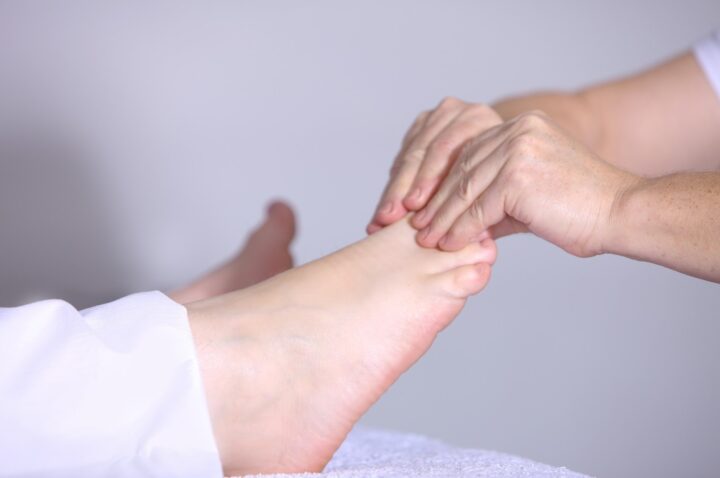What is Plantar Fasciitis and How to Prevent It
Are you feeling pain in the soles of your feet? If you have ever experienced pain in the heel of your foot, you may have been suffering from plantar fasciitis. This condition is caused by inflammation of the plantar fascia, a band of tissue that runs along the bottom of your foot. This article will discuss plantar fasciitis, its causes, and how to prevent it. Let’s get to the details.

What is Plantar Fasciitis?
Plantar fasciitis is a painful condition that affects the bottom of your feet, specifically the thick band of connective tissue (the plantar fascia) that runs from the heel to the toes. As seen at humanhealth.je/plantar-fasciitis-jersey, when the tissue is inflamed and irritated, it can cause chronic and acute pain. Symptoms often include heel pain, arch pain and stiffness, and pain worse when standing or walking.
Most people affected by plantar fasciitis are between 40 and 60 years old, but it can also affect younger people who may be active in sports or have a job requiring long-standing periods. It is more common in women than men, and those with tight calf muscles or high arches are more likely to develop it. However, it can also occur in people with flat feet.
What Causes Plantar Fasciitis?
Several factors can contribute to the development of plantar fasciitis. Activities involving extended standing, walking, or running periods may put extra strain on the tissue and cause inflammation. Improper footwear can also be a contributing factor, as can having tight calf muscles that inhibit normal ankle and foot movement. Finally, overweight or obese individuals are at an increased risk of developing plantar fasciitis.
It is important to note that any activity or condition that places extra strain on the fascia can lead to plantar fasciitis. The condition is rampant now because of our sedentary lifestyle and the fact that most of us wear inappropriate footwear.
Symptoms of Plantar Fasciitis
The primary symptom of plantar fasciitis is heel pain when standing or walking. The pain may be sharp or dull, ranging from mild to severe. Stiffness in the arch area may also occur after rest periods, such as in the morning. Additionally, the tissue around the heel area may be tender when touched.
While these symptoms can vary from person to person, it is important to seek medical help if the pain persists for more than a few weeks. Sometimes what may seem like a simple issue can indicate a more serious condition. For instance, heel pain can be caused by something as simple as a small stone in the shoe, but it can also be caused by more serious conditions such as arthritis or stress fractures.
How to Prevent Plantar Fasciitis
Plantar fasciitis can be prevented by taking certain measures. Below are some easy steps to follow:
- Wear the right shoes – Choose shoes with a low heel, good arch support, and a shock-absorbing sole that fits your feet properly. This will prevent your feet from being overstretched.
- Stretch your calves – Make sure to stretch your calf muscles regularly, as tight calf muscles can cause strain on the plantar fascia. You can do so by taking a ball or towel, wrapping it around your foot, and gently stretching.
- Stay active – Staying active by doing low-impact activities such as swimming or biking can help to keep the tissue in your feet flexible and prevent strain on the fascia.
- Maintain a healthy weight – Carrying extra weight puts extra pressure on your feet and makes it more likely for you to develop plantar fasciitis. Ensure to keep a healthy diet and maintain a healthy weight.
Is Plantar Fasciitis Treatable?
Fortunately, even chronic cases of plantar fasciitis can be treated. Treatment plans often involve stretching exercises, ice packs, anti-inflammatory medications, and physical therapy or orthopedic shoe inserts to provide extra support for the arch area.
In severe cases, surgery may be recommended to release the fascia. However, this should only be considered after all other non-invasive treatments are tried and no longer provide relief. Besides, it is important to note that surgery may not be a permanent solution. This is where you should learn about PRP for plantar fasciitis, which could help soothe the symptoms of pain.
Rest and proper care are also essential in treating plantar fasciitis. If you have the condition, it is important to rest when necessary and avoid activities that aggravate the area. Taking breaks between standing or walking periods will also help to reduce strain on your feet.
Plantar fasciitis is a painful and common condition that several factors can cause. It can be treated or even prevented with proper care while avoiding activities that may aggravate the area. Wearing appropriate shoes with good arch support and shock-absorbing soles, stretching calf muscles regularly, staying active through low-impact activities, and maintaining a healthy weight can reduce the risk of developing plantar fasciitis. If you experience any signs or symptoms, it is important to seek medical help as soon as possible.


